The conquest of Mars
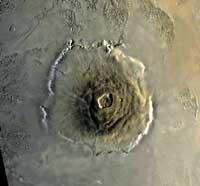
Mars is one of the most important destinations that the human being has in view in the conquest of space, for the effort and the technological revolution that will be carried out in it, and for the consequences that can derive from the adventure.
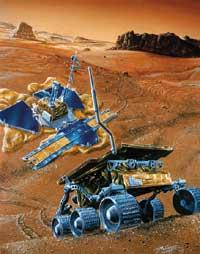
Although the most outstanding efforts to know Mars have been made in the last decade and will be made in the coming years, man's passion to know Mars is very ancient. It is the fourth planet from the Sun, which by its reddish aspect is called red. Before space exploration, Mars was the most powerful candidate to conserve life. Astronomers looking into the sky saw straight lines across the surface of Mars, so it was thought to be constructions made by someone for years. According to the seasons there are changes in the surface color of the planet, so it was thought that vegetation was produced in the hot seasons and cold ones disappeared. For this reason, for the creation of science fiction writers, Mars and the Marcians, the green hombrecillos, have been an inexhaustible source. The steps that have been taken in space exploration with the passage of time have overturned these convictions. However, Mars remains a target. But why?
Causes of Martian Exploration
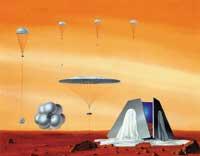
The Martian exploration will show the ability to know the human universe. Although the passage will be small taking into account the integrity of the Universe, it can be a great step for humanity, since once the Earth is abandoned, the return from Mars will not be easy. The main difference between this exploration and those that have been done so far is that to reach the red planet, we must wait for the time when Earth and Mars align, but also to return. If we translate the idea into numbers, to complete the journey, the human being must remain three years in space. The experience of astronauts and their ability to improvise can have much to do with the exploration of Mars, because, whatever happens, it will take at least 40 minutes to send a message from Earth until the response returns. Therefore, the guided flight that will ever be sent to Mars must act with great autonomy.
In addition, one must ask whether the effort is worth it or not, and in other words, what is due to Mars? The objectives can be grouped into three groups: scientists, those relating to the extension of humanity and those who can be considered from the point of view of international cooperation.
For scientists, the planet Mars is a special planet that can give clues about the origin and history of life and planets. Of being an appeal to science fiction writers, as space exploration advances, Mars has become an authentic interest to scientists. In the 1960s, it was concluded that there was no life on Mars and it was not a suitable place for humans either. The images of the Mariner 4 probe showed a panorama similar to the Moon, full of craters.

Now it is believed that this area can be a surface at some point, similar to that of the Moon, formed by the formation of the planets. Meanwhile, the Mariner 9 probe showed that Mars was not so similar to the Moon, that it had tectonic and volcanic characteristics, giant volcanoes and surface rifts, which indicate internal forces. Although it has not yet been investigated in depth, it is believed that the origin of the Martian crust can be between 4,000 and 5,000 million years, while volcanoes can be 1,000 million years ago. On Mars there are impressive precipices, valleys, craters, gigantic volcanoes at some point, remnants of rivers at some point and poles that vary according to the time of year. Iron oxide is 68% of the soil and the rest is clay and silicate. Rocks of volcanic origin and others that appear sedimentary have been found.

The Martian atmosphere is mainly composed of carbon dioxide and remains of large dust storms. The sky, yellow-pink by day, becomes red by evening on Mars. There are also major changes in pressure and temperature, which in a few hours go from -70ºC to -10ºC. And these changes also occur depending on height, for example, taking the temperature on the ground or taking a meter there is a difference of 8 degrees. Taking into account these characteristics, on the surface of Mars there can be no water, but according to the signs that have been found it seems that once on Mars there was water. According to the theory, the atmosphere of Mars was more temperate than today. Of all this arise three questions in the science that want to be answered somehow exploring Mars:
- Why did the characteristics of the atmosphere of Mars change?
- What can be deduced from these changes regarding the changes that occur in the terrestrial environment?
- Was there or is there life on Mars?
It is believed that the answers can come from the knowledge of the geological characteristics of the red planet: types of rocks, age of rocks, subsurface water distribution of Mars, history of volcanoes...
From the point of view of the extension or migration of humanity, the exploration of Mars is one of the great challenges. And it is that the implantation of the colonies on Mars has many difficulties, the most evident is the lack of natural spaces to live in it, together with the lack of transportation. However, given that it is technically possible to construct an artificial environment that allows survival and that the transport system is going to be marketed over time, the feasibility and technological base for the implantation of a human colony on Mars will be studied. It is spoken of the Martian terracoforming.
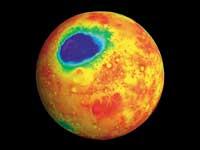
Finally, it is worth mentioning international cooperation. After a cold war between the United States and the Soviet Union, the models of cooperation are imposed. The two giants have been joined by other participating countries such as Europe, Japan, China and Canada.
Successes of recent years
The travels of the Mars Global Surveyor and Mars Pathfinder probes, regardless of the conquest of the Moon, aroused the greatest curiosity ever achieved in the history of space adventure. The Mars Global Surveyor probe was sent to the orbit of Mars in November 1996. A month later the Mars Pathfinder probe was launched into space, but as promised a different route, it reached Mars two months before the Global Surveyor. Pathfinder was designed, built and launched for three years.
Pathfinde's arrival on Mars was new, as the new technique of lowering to the ground was released with a group of airbags that protected the module. In this way, before it was completely stopped, the module left making tanks of pumps on the floor. Five minutes before reaching Mars, with a speed of 7 kilometers per second and 1,500 kilometers from the Martian soil, the probe began to remain due to the effect of friction in the atmosphere and some propellants prepared for it. With the Martian floor, 30 seconds before the tuput was made, the probe swollen on the floor after 12 boats and several laps.

Although theoretically the breakage of the 3/4 bag was not a problem for the probe to arrive properly, none was destroyed. The airbags emptied the wind and the probe expanded. Inside there were the image capture camera, a climate analysis camera, a signal sending mast and the Sojourner, an 11-kilogram robot. Shortly afterwards, Sojourner began to explore Mars by advancing the centimeter per second. In addition to the photographic cameras, Sojourne carried many scientific instruments and was controlled from Earth. For this purpose, they designed a computer program in which images from the immobile probe and the vehicle moving were used. Every day the journey was reviewed on the computer and then orders were sent by radio. The signal took about ten minutes to reach Mars. References were sent to Sojournal and this was the only one that started with five lasers and two cameras to decide distances and see what was ahead.
The last transmission of pathfinder took place on September 27. Although the researchers tried, he did not send any more information. Temperature changes can cause some cable or soldering point to be damaged, even if you are facing an insurmountable obstacle waiting for orders that never arrive and that by the operation of the solar energy can be rotated and rotated around the probe. Until his loss, Sojourne made a tour of 100 meters, carried out 16 studies of rocks and soil and sent more than 17.000 images. Daily he analyzed temperature fluctuations, atmospheric pressure, and measured the direction and speed of the wind. A total of 200 square meters of Mars were explored. The Mars Pathfinder mission lasted 57 days, 27 days longer than initially thought.

Although the fundamental goal of this mission was to safely take something to Mars, another goal was to experience the existence of life on Mars. If we look at the Martian landscape and analyze the data collected, we can think that at some point there was water, the climate was different. However, today it seems that on Mars there is nothing alive.
The cost of the Patfinder mission was 265 million dollars, very reduced for space issues. One fact is that in 1976 carrying the Vikings to Mars was fourteen times more expensive. However, they say that with current technology a lot of huge money would be needed to send man to Mars.
Shortly after Pathfinder's latest transmission, the Mars Global Surveyor probe began sending high-quality images. While in the orbit of Mars, the camera of the Global Surveyo is sending and sending images. The images have shown that the walls of the Marineris valley present very clean layers, such as those of the Gran Foz de Colorado. The altimeter of the probe has shown that the North Pole is much higher than was thought, that in the Northern Hemisphere of Mars there is a large plain that could be flooded at some point. If this is so, where is all this water now? According to most researchers, most of Mars' water is frozen at the poles, subsoil, or the northern plains of the planet. If the theory is checked, it would mean that there is no life, because without liquid there is no life.
Now what?
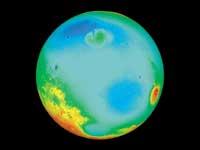
In September, two years have passed since the silencing of the robot Sojourner, but the exploration of Mars has not paralyzed, since the project is more general than it. In addition, during this period the Mars Global Surveyor probe has continued to work and has been able to accumulate many data of interest, especially since in March the probe was placed on the poles of Mars. For example, it has been possible to observe the abundance of pyroxenes in Mars, frequent mineral in rocks of volcanic origin, significant variations of temperatures have been studied both in the soil and in the atmosphere, plains and mountains have been measured, a topographic map of Mars has been realized and it has been observed that the southern hemisphere is mountainous and deep while the southern hemisphere is flat and deep, it has continued to study the small magnetic field, etc. In short, all that has been analyzed indicates that at some point Mars could be very similar to Earth.
Following the tactic of two years ago, at the end of the previous year and beginning of this year, the exploration of Mars has continued sending the probe that will remain in orbit on each journey, and the module that will tread the floor of Mars. In this way, spacecraft will fulfill the function of repeater, sending to Earth the data of the tooling existing on the soil of Mars. The Mars Climate Orbiter probe was sent to space on December 11 of last year, equipped with tools for the investigation of the atmosphere and soil of Mars. The probe will be placed 400 kilometers from Mars, studying atmospheric temperatures, pressure, dust, etc. At the beginning of the year the Mars Polar Lander probe was sent to the South Pole of Mars. Mars Climate Orbiter will arrive on Mars this month, on 23, after a nine-month journey, while the Mars Polar Lander probe will tread the Martian soil in the first week of December.
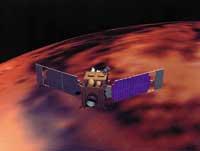
The Mars Polar Lander probe will take samples and send images of the South Pole through a robot arm, as the South Pole is believed to be made up of water and carbon dioxide. The Mars Polar Lander probe, before it enters the atmosphere of Mars, will launch two microprobes that will be embedded in a couple of meters below the ground and will measure the physical characteristics of the subsoil, temperature, etc. At the same time, water or ice detection tests are performed.
On this occasion, however, no off-road vehicle has been sent, but it does have the peculiarity that it will take for the first time a microphone to collect the sounds of the red planet. According to scientists, the work of the Mars Polar Lander probe can last about 90 days in the Martian soil. Therefore, in addition to collecting images of Mars, analyzing its temperatures, discovering the characteristics of the soil and knowing the circumstances of the seasons of time… in the next four months you will see how the surface environment of Mars is. It must be exciting!
Future red red
Since the steps to be taken now are those that are to be taken, in the exploration of Mars we must look forward, because there will be no cuts. And on that horizon, the year 2001. Then it is planned to send two other probes: one will remain in orbit and the other will tread the floor of Mars. As in the Mars Pathfinder expedition, you will drive an all-terrain vehicle with the intention of collecting rocks and collecting soil samples. It will be similar to Sojourner, which can circulate with greater capacity and freedom. It is not yet clear which point of Mars will be sent, as it will be decided based on the data – and budget – provided by Mars Polar Lander and Mars Climate Orbital. The next visit will take place at the two years of 2003.
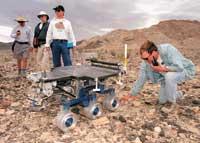
It will be similar to the previous one and will be located somewhere where there can be signs of life. Two years later a new spacecraft will be sent and will try to bring the rocks that have been collected so far. Although rock drag technology to Earth has not yet been developed, a new probe will theoretically be sent to Mars. Inside the probe, among other things, there will be a vehicle that will pick up the collected rocks and bring them to Earth. If everything happens as planned, by 2008 some sections of Mars should be on Earth.
NASA's intentions, but they are not the only ones, because other countries are also interested and have some project and, for example, Japan already has a probe to Mars, the European Space Agency is working with the 2003 Mars Express project, and France has a project in collaboration with NASA. And from there, what? Following the chain, the next step would be to send man, but to do so – in addition to developing technology – we would have to ensure that there has ever been life on Mars, otherwise it does not seem that it is worth going there. However, the bet is – apparently, the sense of the player –: Yes by 2020!.





